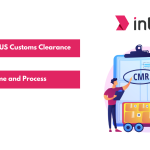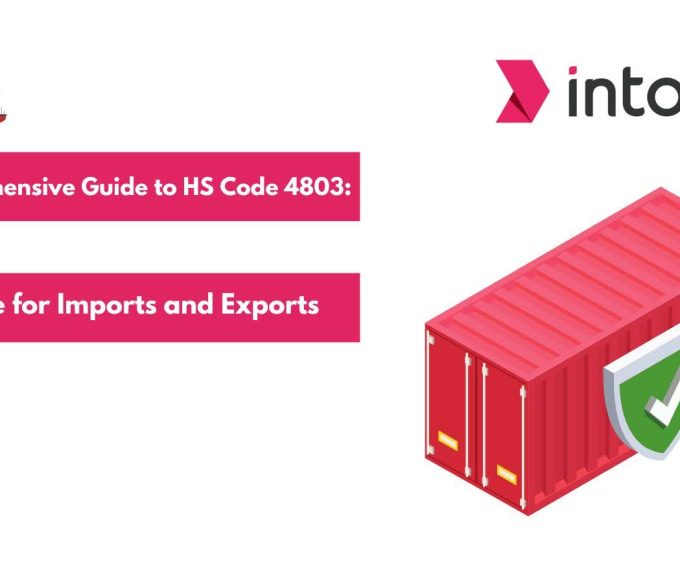Getting through the customs clearance process is crucial for seamless global trade, but it’s not without its challenges. Efficient customs clearance ensures your shipments move quickly across borders, minimizing delays and costs. However, traditional customs processes often involve paperwork bottlenecks, slow approvals, and unexpected fees, creating headaches for businesses of all sizes.
In today’s digital environment, geopolitical shifts and evolving trade agreements add another layer of complexity. Whether it’s tariff changes, new documentation requirements, or compliance issues, staying updated can feel overwhelming.
This article discusses how customs clearance has evolved in the digital age, shedding light on modern solutions that simplify the process. You’ll discover how technology-driven tools are replacing outdated systems, reducing errors, and boosting efficiency.
Technology Solutions for Modern Customs Clearance
The digital age has revolutionized the customs clearance process, offering technology-driven solutions that simplify global trade. Here’s a closer look at some of the key innovations:
- Implementation of Electronic Data Interchange (EDI):
EDI allows businesses to exchange essential customs documentation electronically, eliminating the need for paper-based submissions. This real-time exchange speeds up approvals, reduces errors, and ensures compliance with customs regulations. With EDI, you can achieve quicker customs processing and a seamless flow of goods across borders.
A study suggests that “EDI can cut order processing times by as much as 62%, enabling faster deliveries and enhancing satisfaction”.
- Digitization for Enhanced Efficiency:
The shift to digital customs systems has streamlined procedures such as cargo tracking, duty calculations, and risk assessment. Digital platforms enable you to submit applications, pay duties, and receive updates instantly, reducing turnaround times and ensuring transparency.
- Automation of Manual Customs Tasks Through RPA:
Robotic Process Automation (RPA) is transforming customs clearance by automating repetitive tasks like data entry and validation. These bots ensure accuracy and free up human resources for strategic activities, improving overall productivity and cost-efficiency.
By adopting these modern solutions, businesses can overcome traditional challenges and achieve faster, smarter customs clearance.
Advanced Technology Integration in Customs Clearance
Cutting-edge technologies are reshaping the customs clearance landscape, providing smarter, more efficient solutions for businesses navigating global trade complexities.
Here are some key advancements:
- Artificial Intelligence for Risk Assessment in Customs:
AI-powered systems analyze vast datasets to identify high-risk shipments, flagging potential compliance issues or illegal activities. These tools enhance customs security while expediting clearance for low-risk goods, helping businesses avoid unnecessary delays. With AI, risk management becomes faster, more accurate, and more proactive.
- Application Monitoring Tools to Reduce System Downtime:
Modern customs systems rely heavily on software platforms, and any downtime can disrupt operations. Application monitoring tools help detect and resolve technical glitches in real-time, ensuring continuous system performance. This minimizes delays and provides a smoother experience for businesses managing customs-related tasks.
- IoT for Enhanced Shipment Monitoring and Storage Conditions:
Internet of Things (IoT) devices are revolutionizing shipment tracking by offering real-time visibility into cargo locations and environmental conditions. From temperature-sensitive goods to fragile items, IoT sensors ensure optimal storage and transit conditions, reducing risks and ensuring compliance with regulatory requirements.
Around 44% of customs authorities are already using AI, machine learning, and big data analytics in their operations, while an additional 33% intend to implement these technologies soon. This study indicates that by integrating these advanced technologies, businesses can stay competitive, optimize their customs processes, and enhance overall supply chain resilience.
Strategic Optimization of Customs Processes
Strategic Optimization of Customs Processes focuses on enhancing the efficiency, transparency, and compliance of customs operations to streamline global trade. Here are key strategies to optimize customs processes:
- Comprehensive View of Customs Operations: Developing an integrated system that consolidates all customs-related data—like shipment documentation, compliance statuses, and clearance updates—helps businesses monitor and manage operations effectively. A comprehensive view enables proactive issue resolution and better decision-making.
- Digital Dashboards: Implementing digital dashboards allows businesses to monitor customs clearance performance in real-time. Metrics such as clearance time, shipment delays, and compliance rates provide actionable insights for identifying bottlenecks and improving operational efficiency.
- Harmonizing Customs Processes Globally: Aligning customs practices with international standards, such as those set by the World Customs Organization (WCO), reduces complexity in cross-border trade. Harmonization ensures smoother clearances, minimizes regulatory discrepancies, and fosters global collaboration.
- Leveraging Data-Driven Insights: Using analytics to evaluate trends in customs delays, penalties, and costs helps businesses refine their strategies. Data-driven insights empower companies to anticipate challenges and optimize compliance processes.
- Automating Repetitive Tasks: Automation solutions, such as Robotic Process Automation (RPA), manage manual tasks like data entry, validation, and documentation. This reduces errors, increases accuracy, and frees up human resources for higher-value activities.
Customs Charges & Technology’s Cost-Reducing Impact
Customs clearance charges are a crucial part of the international shipping process. Understanding the factors influencing these charges and how technology is driving efficiencies can help businesses better plan their logistics and reduce costs.
- Customs Duties and Taxes
- Customs duties are calculated based on the value of goods, their classification (HS code), and the destination country’s import tariff rates.
- Taxes such as VAT or GST are levied on imported goods, adding to the clearance costs.
- Type of Goods
- The nature of goods significantly affects clearance charges. For example:
- High-value or restricted items often require additional documentation and inspections.
- Perishable or hazardous goods involve stricter regulations, which can increase handling fees.
- The nature of goods significantly affects clearance charges. For example:
- Shipment Value
- The higher the declared value of goods, the higher the customs duties, taxes, and insurance charges.
- Under-invoicing can lead to penalties and delays, further raising costs.
- Documentation Accuracy
- Errors in documents such as the bill of lading, commercial invoice, or packing list can lead to delays and fines, increasing costs.
- Proper classification and accurate declaration are key to avoiding unnecessary charges.
- Customs Brokerage Fees
- Engaging customs brokers incurs a service fee, which varies based on the shipment’s complexity.
- While brokers ensure compliance and speed up clearance, their charges are an added cost.
As a leading cross-border logistics provider from India to the USA, Intoglo offers tools to streamline your customs process. Get hands-on with Intoglo’s AI-Based HTS Code Scanner to quickly identify HS codes by simply taking a photo of an item, reducing classification errors and avoiding unnecessary charges. Additionally, stay updated on every step of your shipment with Glotrack, Intoglo’s advanced tracking module, providing end-to-end visibility from pickup to delivery.
The Impact of Technology on Reducing Customs Clearance Charges
Advancements in technology are playing a pivotal role in reducing the costs and time associated with customs clearance. Automated customs systems, paperless documentation, and AI-driven tools streamline processes, reduce human error, and accelerate processing times. Technologies like blockchain ensure transparency, minimize fraud, and simplify verification, which lowers brokerage and compliance costs.
Real-time tracking and predictive analytics optimize shipment management, helping businesses avoid delays and related penalties. Customs compliance software automates classification and tax calculations, ensuring faster clearances with minimal errors.
Additionally, AI-powered risk assessments reduce the need for inspections, speeding up clearance while cutting storage and handling fees. Overall, technology enables businesses to achieve significant cost savings and improved efficiency in the customs process.
Conclusion
In the digital era, the customs clearance process has evolved significantly, with technology serving as a key driver in boosting efficiency, lowering costs, and ensuring better compliance. From automation and digital platforms to AI-driven risk assessments and real-time tracking, businesses now have the tools to streamline their international shipments and minimize delays.
Understanding the factors influencing customs charges, such as goods type, shipment value, and country-specific regulations, enables companies to plan their logistics strategies better and avoid costly mistakes.
At Intoglo, we’re committed to making your customs clearance process smoother and more cost-effective through tech-enabled platforms. Serving over 200 clients, including MSMEs, D2C brands, and large enterprises, Intoglo offers comprehensive logistics solutions, including:
- India to USA door-to-door FCL Shipping
- Origin Pickup
- Origin CFS & Customs Clearance
- Ocean Freight
- Destination CFS & Customs Clearance
- Last Mile Delivery
- Pan India Pickups in 24 hours
- Own CFS space at Major Ports
- Contracts with Major Shipping Lines
- Hassle-Free Customs Clearance
- Direct Trucking Network in USA
- Next-Gen Technology Solutions









Leave a comment